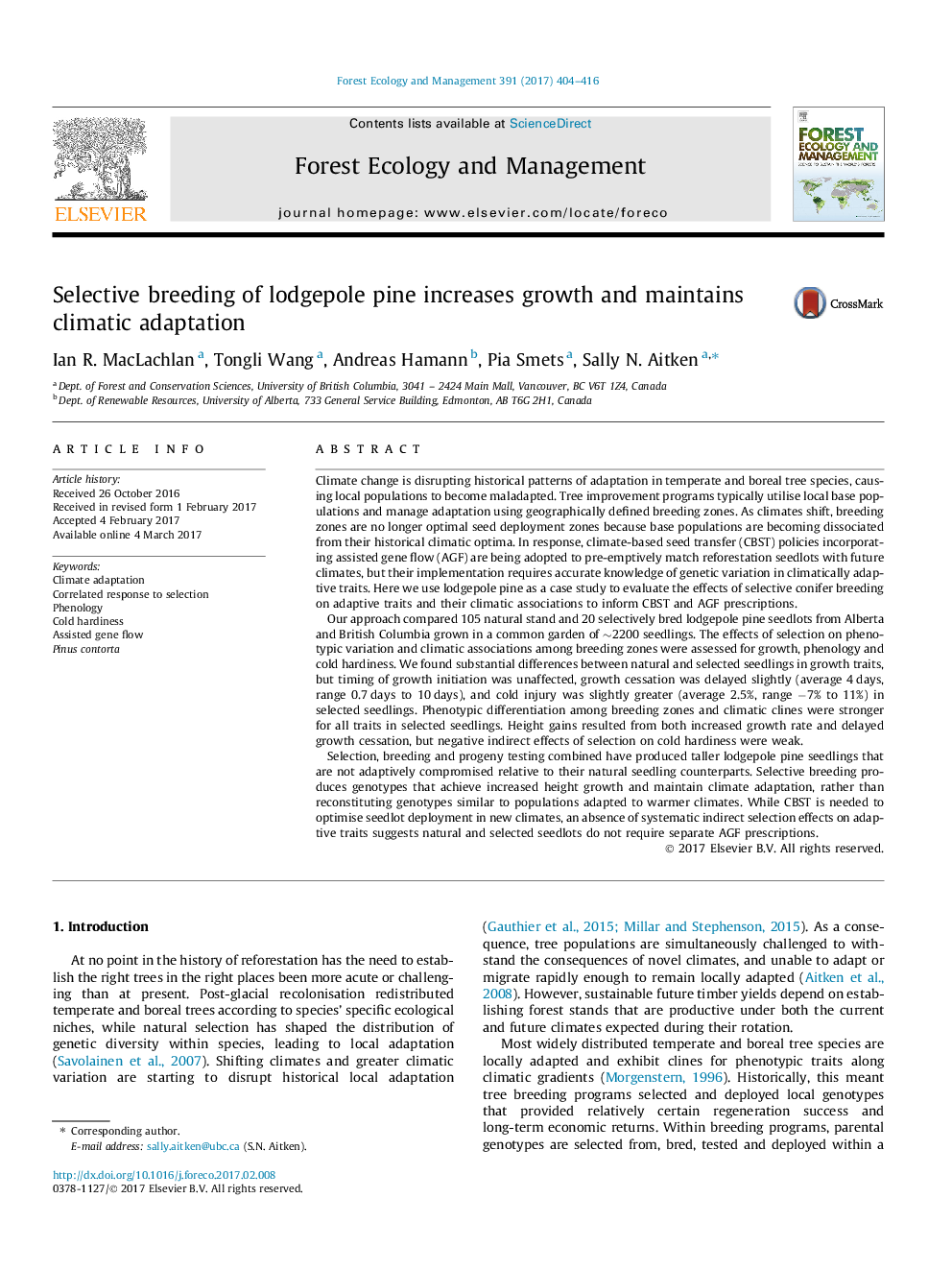| کد مقاله | کد نشریه | سال انتشار | مقاله انگلیسی | نسخه تمام متن |
|---|---|---|---|---|
| 6459478 | 1421367 | 2017 | 13 صفحه PDF | دانلود رایگان |

- Comparison of climatic adaptation in natural and selectively bred lodgepole pine seedlings.
- Correlations among adaptive traits are not altered by selection.
- Selective breeding increases seedling growth rate, but maintains adaptive growth phenology.
- Autumn cold hardiness is not compromised by gains in height growth.
- Selectively bred seedlings are suitable for assisted gene flow prescriptions in future climates.
Climate change is disrupting historical patterns of adaptation in temperate and boreal tree species, causing local populations to become maladapted. Tree improvement programs typically utilise local base populations and manage adaptation using geographically defined breeding zones. As climates shift, breeding zones are no longer optimal seed deployment zones because base populations are becoming dissociated from their historical climatic optima. In response, climate-based seed transfer (CBST) policies incorporating assisted gene flow (AGF) are being adopted to pre-emptively match reforestation seedlots with future climates, but their implementation requires accurate knowledge of genetic variation in climatically adaptive traits. Here we use lodgepole pine as a case study to evaluate the effects of selective conifer breeding on adaptive traits and their climatic associations to inform CBST and AGF prescriptions.Our approach compared 105 natural stand and 20 selectively bred lodgepole pine seedlots from Alberta and British Columbia grown in a common garden of â¼2200 seedlings. The effects of selection on phenotypic variation and climatic associations among breeding zones were assessed for growth, phenology and cold hardiness. We found substantial differences between natural and selected seedlings in growth traits, but timing of growth initiation was unaffected, growth cessation was delayed slightly (average 4Â days, range 0.7Â days to 10Â days), and cold injury was slightly greater (average 2.5%, range â7% to 11%) in selected seedlings. Phenotypic differentiation among breeding zones and climatic clines were stronger for all traits in selected seedlings. Height gains resulted from both increased growth rate and delayed growth cessation, but negative indirect effects of selection on cold hardiness were weak.Selection, breeding and progeny testing combined have produced taller lodgepole pine seedlings that are not adaptively compromised relative to their natural seedling counterparts. Selective breeding produces genotypes that achieve increased height growth and maintain climate adaptation, rather than reconstituting genotypes similar to populations adapted to warmer climates. While CBST is needed to optimise seedlot deployment in new climates, an absence of systematic indirect selection effects on adaptive traits suggests natural and selected seedlots do not require separate AGF prescriptions.
Journal: Forest Ecology and Management - Volume 391, 1 May 2017, Pages 404-416